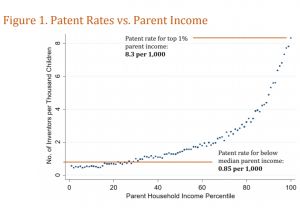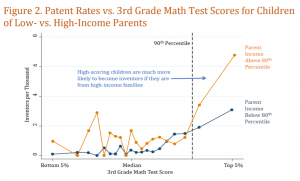The Restructured Role of Individualism in the American Government
Alexis de Tocqueville, a french sociologist and political theorist, traveled to the United States in 1831 to study the success of the newly established democracy. He applauded how the American political view was characterized by liberty, equality, democracy, capitalism, and most importantly, individualism. Tocqueville explained that the freedom of individuals, regardless of economic background, allowed them to transform themselves as “Rags to Riches.” The example used in his explanation was President Lincoln’s ability to work hard and demonstrate success despite being born in a log cabin.
America’s democracy was founded upon these political values, but, however, today’s political culture does not demonstrate the same level of freedom for individuals. The main intention of this analysis is to examine how the american political culture no longer upholds the principle that all individuals share the same opportunities. The last century’s legislators and their values have shaped the political culture in America’s democracy by pretending to uphold equality and individualism.
Inequality of opportunity in the United States is first introduced in the early stages of life. The ability to innovate in the United States today is portrayed more as a privilege, rather than an equal opportunity. For example, not all socioeconomic classes in America have the same level of opportunity or chance to become an inventor. The Equality of Opportunity Project at Harvard did a recent study to see who exactly becomes an inventor in the United States. Their study found that there are many “lost Einsteins” in America, which are defined as “women, minorities, and children from low-income families who would’ve had high-impact discoveries had they been exposed to innovation while growing up.” (Equality of Opportunity Project, 2017) Their study showed that if these groups invented at the same rate as white men from high-income families (70% percent of men in the U.S. are represented by a white male in the House), we would have four times as many inventors in America today.
The chart above gives us a visual demonstration on the correlation between parent income, performance of third graders on standardized math tests, and the likelihood of becoming an inventor. As one can see, the opportunity to excel is diminished at a young age due to the lack of access to financial resources required to effectively learn and become innovative. Parents with a higher income level are more likely to have high-scoring children that become inventors when they grow up. If the american government created legislation that improved opportunities for disadvantaged children and low-income individuals, the political culture could reduce disparities and even initiate innovation and economic growth. (Equality of Opportunity Project, 2017) The chart above created by the Equality of Opportunity Project at Harvard continues to strengthen the idea that innovation is less likely to take place in a household of lower income. For example, the number of inventors per thousand of children differs between the top 1% and the rest of society by parent income. The issued patent rate to inventors with parents from the top 1% income level was found to be 8.3 per 1,000, while the issued patent rate to inventors with parents below the 1% income level was 0.85 per 1,000. This is a clear distinction that the individualistic value of equal opportunity is not demonstrated by today’s political culture, due to the decisions made by the american democracy. (Equality of Opportunity Project, 2017)
The chart above created by the Equality of Opportunity Project at Harvard continues to strengthen the idea that innovation is less likely to take place in a household of lower income. For example, the number of inventors per thousand of children differs between the top 1% and the rest of society by parent income. The issued patent rate to inventors with parents from the top 1% income level was found to be 8.3 per 1,000, while the issued patent rate to inventors with parents below the 1% income level was 0.85 per 1,000. This is a clear distinction that the individualistic value of equal opportunity is not demonstrated by today’s political culture, due to the decisions made by the american democracy. (Equality of Opportunity Project, 2017)
The charts above can also be viewed at the following URL (http://www.equality-of-opportunity.org/assets/documents/inventors_summary.pdf).
Works Cited:
Bell, Alex; Chetty, Raj; Jaravel, Xavier; Petkova, Neviana and Van, John. Who Becomes an Inventor in America? The Importance of Exposure to Innovation. The Equality of Opportunity Project at Harvard. December, 2017.
